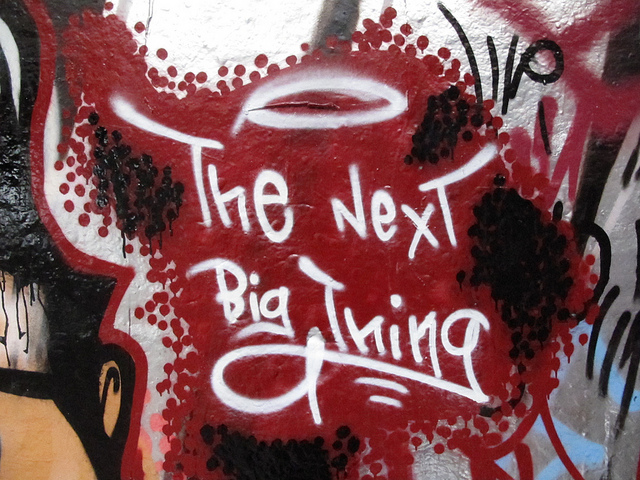
I often get grumpy about “shiny object syndrome,” when people jump on some brand-new social network or tool and declare it the “Next Big Thing,” because – well who knows where the reasoning comes from much of the time. People want to be the first to jump on the next trend, but in doing so can fail to stop and analyze what these tools mean.
“SOS” can merely be premature rather than dead wrong (Instagram was a great example) but it can still be idiotic for any number of reasons:
- Mass adoption is a guess until it happens (Google Plus come to mind, as people rushed to crown it before its real uses became defined and apparent)
- People declare tools “universal” before the tool is even available on all of the popular platforms (Instagram has proved to be a big winner, but people touting it when it was only available on iOS was simply premature)
- Many tools do one thing- is one thing the “Next Big Thing?” Not really (Vine – again, a popular tool, but in many ways a limited toy, hardly a “next Big Thing”)
- Is the content produced from these tools portable? Can I own it or at least host it on my site? Ok, can I at least embed it? No? Yes? That’s important, you see…
- Many tools are great for some applications, companies and industries, but not so much for others (hello, Vine)
My examples might seem harsh assessments, and many of those mentioned are very useful tools that I use myself at least to some degree- but jumping from trend to trend and trying to declare that “Next Big” is largely a useless exercise.
What is useful? Seeing the “Next Little Thing.” This occurred to me most recently with the launch of Hyperlapse, a tool from Instagram that allows people to easily make time-lapse videos. The tool is pretty neat-o, lading to an entertaining (at first) burst of time-lapse videos from friends and others, something like this one:
Predictably, brands got on board. I’m whole-heartedly in favor of experimentation, but you can’t tell me this is part of a polished, professional brand-vertising campaign:
http://instagram.com/p/sL5sFowhF5
Hungry? Me neither. Not to say there will not be successful brand uses, but betting on a marketing trend based on this new tool (based on a film/video trick that is not at all new) is not smart money.
If Vine (and Instagram video) is a one-note toy, then this is more of the same. Predictably, colleagues in the social media marketing industry are doing the usual “Next Big Thing” for the moment- though that may be dying down even as I write this.
So- what is the significance? Look for the Next Little Thing. By that, I mean figure out what the “Not the Next Big Thing” tools are doing that actually means something in the bigger picture.
In the case of Hyperlapse, I did some reading and listening and found what I thought was the real innovation: Hyperlapse tapped into image stabilization and made it accessible. This means that other apps will make use of that (if some haven’t already), and that better quality video – from any number of apps, presented in any number of ways – will be at more fingertips, including more social media marketing fingertips. That’s the Next Little Thing. That’s what gets me excited about Hyperlapse, even though as an Android user I haven’t even tried it yet (and for what it’s worth I understand why there is a delay in making this work for Android devices).
So, the next time a bunch of Social Media Bloggers start breathlessly heralding the Next Big Thing, look a little closer. Take a longer view and find the Next Little Thing; it’s better than dismissing the hype.
One thing is always that one of the most widespread incentives for applying your credit cards is a cash-back as well as rebate offer.
Generally, you’ll have access to 1-5% back on various expenses.
Depending on the credit card, you may get 1% returning on most purchases, and 5% in return on expenditures made on convenience stores, filling
stations, grocery stores as well as ‘member merchants’.